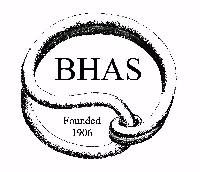|
Selected Articles from the BHAS Bi-Annual magazine
"Flint" Autumn 2015
Measuring Mortar
The excavations at Hog Croft, Ovingdean, continue to reveal many
features and artefacts and we need all the information the site has
to offer to help to interpret these finds. This involves methodical
procedures to recover all this information. It is not always exciting
and sometimes tedious! Why do we sieve the top soil and collect all
the loose mortar, pro-fessional groups 'would just discard the
topsoil'? I am sure that on many professional digs this happens, but
they have time con-straints that, thankfully, we do not. Having
permission to excavate an archaeologically rich site bestows a
responsibility to make best use of the opportunity.
I have started quantifying the distribution of finds and, using David
Staveley's excellent Snuffler software, started to produce density
plots of the distribution of artefacts by weight. Although incomplete
this work has produced some tentative results.
The distribution of tobacco clay pipe fragments in the top soil of
the South trench (Trench P2) is concentrated in the South of the
trench. (Fig. 1). This ties in with a distribution of post medieval
ar-tefacts around a depression noted last year and helps to build a
picture of a localised area of post medieval activity. We have
collected lots of mortar fragments from soil in the lower strata
downhill of the mortared wall in the North Trench, P1 (Fig. 2). By
weighing these fragments we have an idea of what quantities to expect
in similar circumstances. What if a wall has been completely robbed
out? Could we use the residual concentration of mortar fragments to
infer the previous existence of a mortared structure in that area?
Diggers have collected soil samples from various areas. These samples
are being sieved and the fraction over 0.75 cm has been sorted into
various categories of inclusion including chalk, angular flints,
rounded flints and mortar. Preliminary results show amarked
difference between superficially similar contexts (Fig. 3). These
differences can be easily overlooked when excavating. Maybe this
method will reveal unexpected information that can tell us something
more about the site. Archaeology can be exciting. Finding a
'treasure' can, and should, be a great personal experience, but,
contributing to the routine and sometimes tedious tasks that are a
necessary part of our endeavours should also be a source of personal
satisfaction. I am very grateful that we have a team that is so very
willing to 'give it a go', even when it is not very exciting!
John Skelton

|

